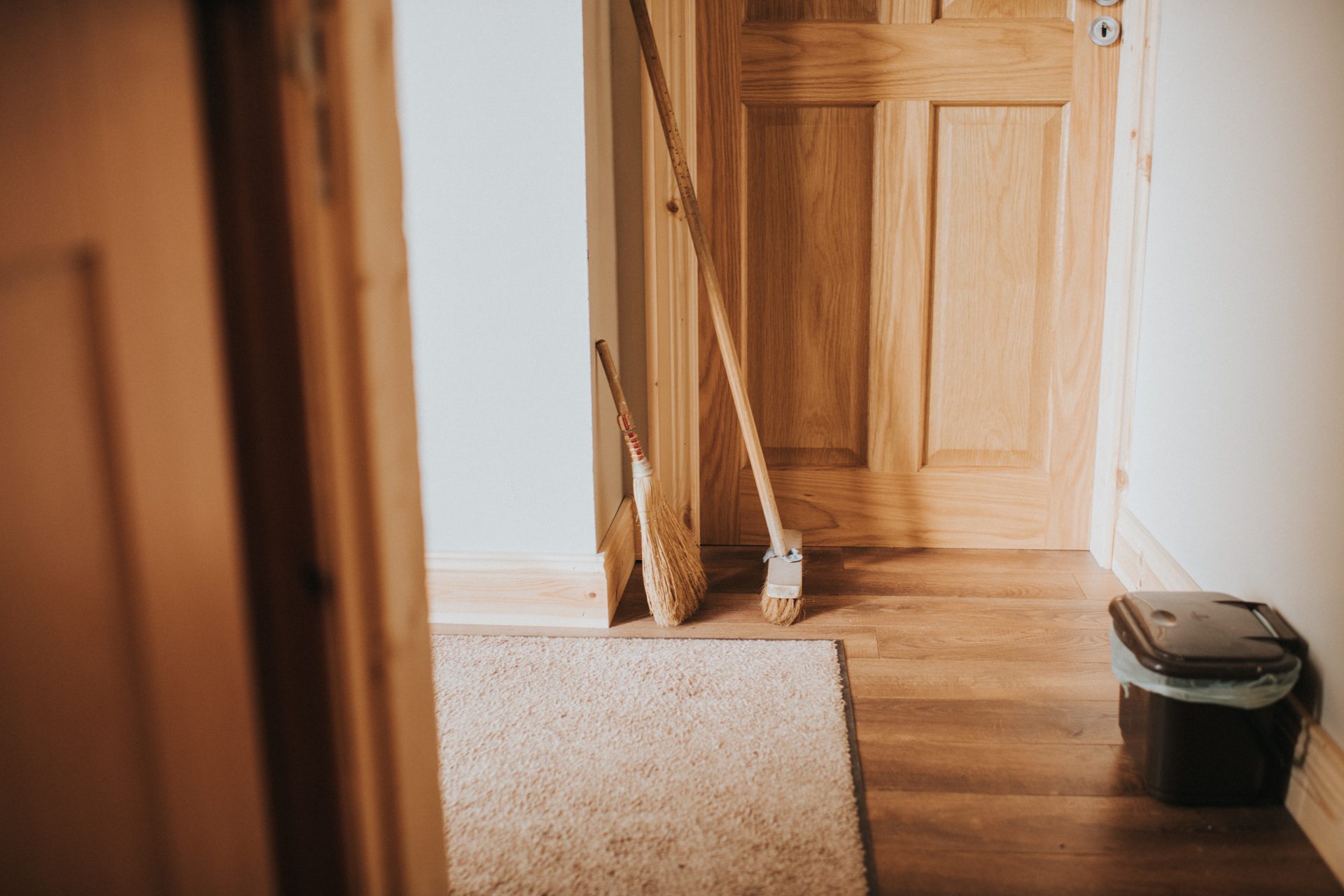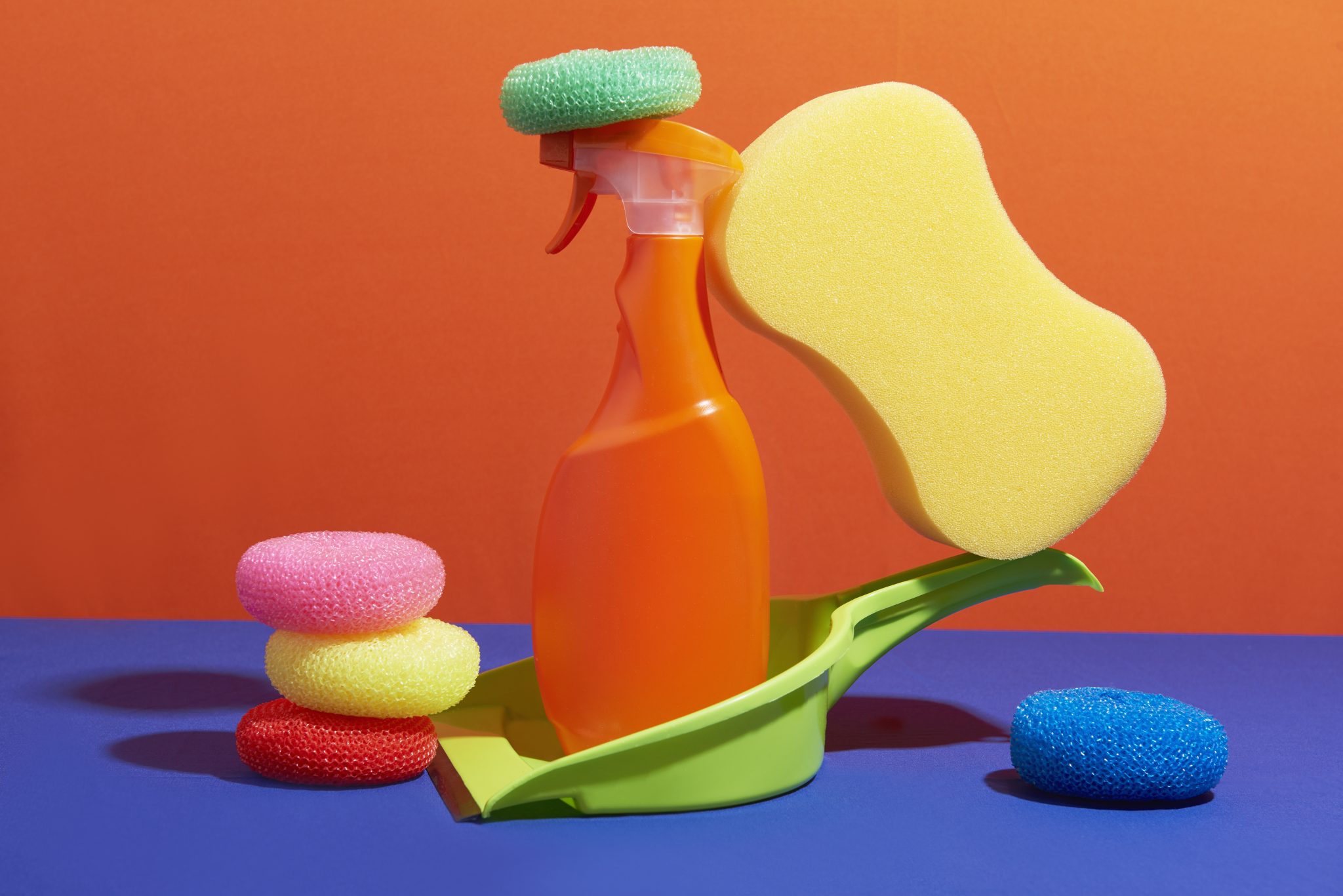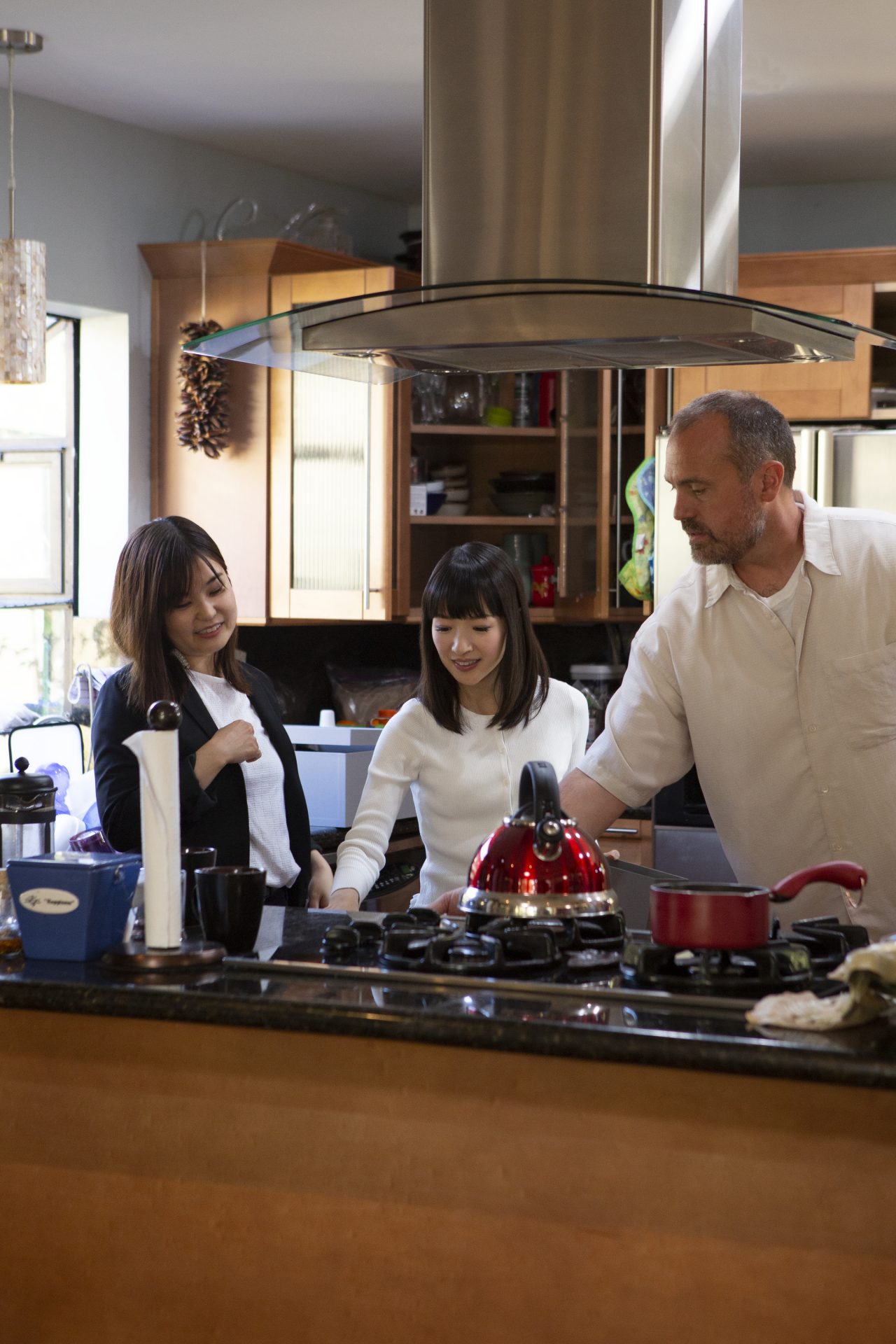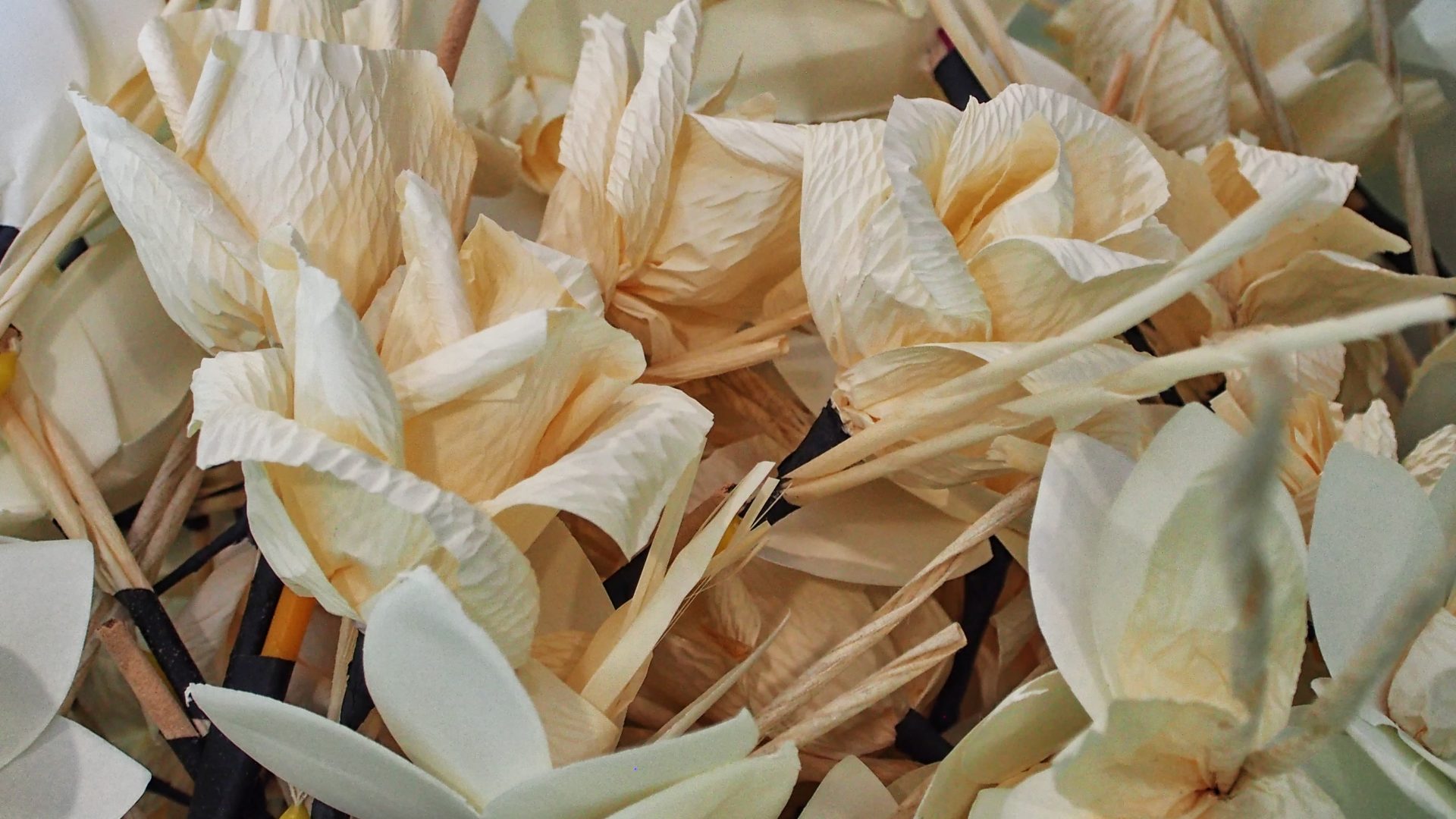Written by Kayleigh Dray
Kayleigh Dray is Stylist’s digital editor-at-large. Her specialist topics include comic books, films, TV and feminism. On a weekend, you can usually find her drinking copious amounts of tea and playing boardgames with her friends.
With that ‘new year, new you’ slogan forever ringing in our ears this January, it’s understandable that many of us want to get our homes and minds as clear as possible – and these decluttering techniques are designed to help.
It definitely still feels like we’re living in the depths of winter, but there’s no getting away from the fact that January is, famously, considered to be a time of renewal.
Of course, it is considered traditional to wait until spring to get started on all of our big cleaning and decluttering projects. Why, though? After all, we’re spending a lot more time in home this month – largely due to the utterly miserable weather, but also because pay day is still a long way off. And, to be honest, we’d much prefer to spend our time outdoors once the world gets a little warmer and sunnier, rather than stuck inside fixing up our homes and working hard on all of our renovations.
Basically, we want to throw out the rule book, and make January the month – and the bleak mid-winter the season – for decluttering our homes. It can, however, be difficult to know where to begin, especially when you suddenly realise just how much stuff you truly own.
How, then, should we go about getting rid of things we no longer need? Why, by striving to make our home environment an extension of who we are and opting for a meditative decluttering method, of course.
Here are just a few of our favourite mindful cleaning techniques.
Oosouji
In Japan, there is a practice called oosouji, which literally means “big cleaning.”
According to Ayin, this is usually conducted at the end of each year or school term, and it asks people to not just sweep away dust but to clean away the negative energy of the past.
In doing so, the hope is that they will declutter their homes, hearts and minds ready for the new year ahead.
How to cultivate oosouji in your home:
- As per Ayin, we must always start the oosouji ritual by the entrance of each room and “work our way clockwise to end where we started, with a fresh state-of-mind.”
- Work from the top of the house and downwards (begin by dusting off the ceilings, and so on).
- Focus on removing all stains from furniture and homeware (they are said to “remind you of the past in a negative way”).
- Place boxes in all rooms for items that are no longer needed. When you’re done, drop these boxes of at a charity shop.
- Set one box aside for rubbish, too, and be sure to remove it immediately whenever you finish with a room.
FlyLady
The FlyLady technique – so named due to founder Marla Cilley’s love of fly fishing – works by breaking all household tasks into small, manageable increments.
However, it also works as a self-love exercise – which is why it has been retroactive rechristened the “Finally Loving Yourself (FLY)” technique.
How to cultivate the FlyLady technique in your home:
- As previously reported by Stylist, the technique starts with “babysteps”, some 31 small things that can be done around the house every week in order to build up your decluttering habit. Breaking it up into smaller duties makes it more manageable, says FlyLady, providing you with a sense of peace.
- Separate your home into five different zones. The first week of the month is dedicated to zone one. Set aside 15 minutes a day to eliminate any clutter that has accumulated throughout your home. Repeat with zone two the following week, and so on until the month is complete.
- Ensure you are only cleaning for 15 minutes at a time, and be sure to use a timer to keep track. This should not be a rushed and stressful process.
The KonMari method
The KonMari Method is Marie Kondo’s minimalist-inspired approach to tackling your stuff category-by-category rather than room-by-room.
The aim? To be left with a home filled with items that “spark joy.”
How to cultivate the KonMari method in your home:
- As per Marie Kondo’s website, we must begin the process by committing ourselves to tidying up.
- Imagine your ideal lifestyle and keep that in mind throughout; anything that won’t help you on this journey isn’t deserving of your space or you.
- Remember, it’s only after you’ve discarded can you turn your full energy and attention to that which brings you joy. Go through and get rid of items you no longer need or cherish, and remember to do so with gratitude.
- Tidy by category – clothes, books, papers, komono (miscellaneous items) and then sentimental items – not location. And always, always follow this order.
- Create an environment that makes you happy by going through all items and asking if they spark joy. Of course, joy looks different to everyone; however, Kondo herself describes it on her website as “a little thrill, as if the cells in your body are slowly rising.”
Khaneh-tekani
In Iranian culture, families prepare for Norooz (the Iranian new year, which coincides with this year’s spring equinox on 20 March) by partaking in a spring cleaning ritual known as khaneh-tekani.
This literally translates to “shaking down the house,” and aims to clean all those things that don’t get attention during the year, including carpets, furniture, and silverware.
How to cultivate khaneh-tekani in your home:
- Wash curtains and carpets.
- Shake and sweep dust and debris from all rugs and surfaces.
- Remove stains from glass windows.
- Clean out all cupboards.
- Wipe down the walls and repaint where necessary.
“Many also burn sandalwood or a herb called espand to freshen the air,” notes the Tehran Times.
“And some buy new housewares and replace them with old ones, [and] buying plants and flower pot is another tradition performed by some people in Iran.
“This way, people invite spring, the renewal of nature, to every corner of their houses. [And it means that] khaneh tekani is not only physically cleaning your house, but it’s also about getting rid of the past and of evil spirits.”
The minimalist game
Ever spotted the #minsgame hashtag on social media at the beginning of each month? It’s linked to a method that gamifies the decluttering experience, as devised by Ryan Nicodemus and Joshua Fields Millburn of The Minimalists.
How to cultivate the minimalist game in your home:
- Beginning on the first day of a month, the minimalist game asks that you declutter a certain number of items from your home corresponding to the day of the month.
- To break it down, this means that you will get rid of one item on the first day, two items on the second day, three on the third, and so on.
- By the end of a 31-day month, you will have removed 496 items from your home (if you play all the way through).
- By starting small and increasing over time, the hope is that you will build confidence in your decision-making abilities and get increasingly better at letting go of stuff.
- As per The Minimalists’ website, the game works better if you find a “friend, family member, or coworker who’s willing to minimize their stuff with you,” as they will hold you accountable each day.
Döstädning
Döstädning, otherwise known as “Swedish death cleaning,” is designed as an easy way for us to purge our homes and organise our possessions in hopes that our families won’t be overburdened by our belongings once we pass away.
How to cultivate döstädning in your home:
- As previously reported by Stylist, you should start by gifting, donating, or recycling those items you have stashed away in boxes because you don’t want to deal with them.
- Ditch anything that may prove hurtful or embarrassing to your family (or, to quote the ever-pragmatic Margareta Magnusson, “Save your favourite dildo, but throw away the other 15!”).
- Sort your clothes and shoes into four piles: those you love and wear frequently, those you want to keep but don’t necessarily know why, those that don’t fit your body or lifestyle (donate), and those that are in poor condition (trash).
- Gift your belongings gradually and thoughtfully.
- Sort through photographs and throw out any duplicates or images of people you can’t name. Then, give away what you can.
- Keep one box of memories for yourself.
Feng Shui
Feng Shui is something we’ve probably all heard before and is a concept related to Taoism and is all about harmonising your surroundings.
How to cultivate feng shui in your home:
- If you’re getting rid of clutter make sure there is a reason behind it as opposed to doing it just because.
- Clean each room thoroughly paying attention to each individual space.
Images: Getty; Netflix
Source: Read Full Article





